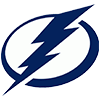Javier Baez: .191/.233/.355
Jose Altuve: .224/.284/.322
Shohei Ohtani: .192/.297/.367
Ian Happ: .301/.408/.654
Zach Davies: 2.23 ERA
With an unprecedented 60-game season, we knew we would see some stat lines for guys who weren't even close to expectations. How do we look at these guys going forward? Is this just a bad/good run of 35 games? Is this change in performance real or just a byproduct of a small sample size? Let's look at some guys who have been better or worse than expected.
This could have been a 10,000-word piece, so if there's a player you don't see here that you expected (there will be several), let me know in the comments and I'll give my take.
Better than expected
L.A. Angels – Dylan Bundy, SP
Bundy entered 2020 with a career 4.67 ERA and an injury-filled stint with the Orioles, but the change of scenery has done wonders. I keep thinking he'd fade after a hot start, but after a small hiccup against the Giants, Bundy has a 2.50 ERA in his last three starts and a 2.49 mark overall. He's averaging just 90.5 mph with his fastball, so it's not the velocity, but Bundy's 9.8 K/9 and 2.1 BB/9 are career highs. So, what do we put more weight in, the 50.2 innings this year or the nearly 615 innings he threw with the Orioles? Maybe a little of both? We have to give the Angels' coaching staff some credit here, but
Javier Baez: .191/.233/.355
Jose Altuve: .224/.284/.322
Shohei Ohtani: .192/.297/.367
Ian Happ: .301/.408/.654
Zach Davies: 2.23 ERA
With an unprecedented 60-game season, we knew we would see some stat lines for guys who weren't even close to expectations. How do we look at these guys going forward? Is this just a bad/good run of 35 games? Is this change in performance real or just a byproduct of a small sample size? Let's look at some guys who have been better or worse than expected.
This could have been a 10,000-word piece, so if there's a player you don't see here that you expected (there will be several), let me know in the comments and I'll give my take.
Better than expected
L.A. Angels – Dylan Bundy, SP
Bundy entered 2020 with a career 4.67 ERA and an injury-filled stint with the Orioles, but the change of scenery has done wonders. I keep thinking he'd fade after a hot start, but after a small hiccup against the Giants, Bundy has a 2.50 ERA in his last three starts and a 2.49 mark overall. He's averaging just 90.5 mph with his fastball, so it's not the velocity, but Bundy's 9.8 K/9 and 2.1 BB/9 are career highs. So, what do we put more weight in, the 50.2 innings this year or the nearly 615 innings he threw with the Orioles? Maybe a little of both? We have to give the Angels' coaching staff some credit here, but I still remain a bit skeptical of his hot start this year. The truth probably lies somewhere in the middle, such as perhaps a 4.00 ERA the rest of the way.
Chicago White Sox – Tim Anderson, SS
I realize Anderson hit .335 with 18 homers and 17 steals last year, but I had him as a prime regression candidate on the basis of his ugly 109:15 K:BB (2.9 BB percentage, 21 K percentage). This year, he's nearly doubled his walk rate to 5.7 percent while posting a 21.3 K percentage and hitting .351/.390/.595, a 130-point increase in OPS year over year. He's homered seven times and swiped five bases, and at 27, he's looking like a third-round pick at worst next year.
Miami Marlins – Sixto Sanchez, SP
It's only three starts, but despite just 18 minor league starts above A-ball, Sanchez already looks like an MLB ace. With 2.37 ERA and 19:1 K:BB in 19 innings, Sanchez has been sensational, particularly his seven scoreless innings with 10 strikeouts against the Rays. It's a bit surprising that with his stuff, Sanchez struck out less than a hitter per inning in the minors, but then again, he's still just 22 (barely), so he's got plenty of time to add strength and develop his secondary stuff. I just didn't think he's be this good this quickly.
New York Yankees – Luke Voit, 1B
I wasn't completely bought in after Voit's .263/.378/.464 last year, but it's actually looking like Voit is an elite slugger. So far in 2020, Voit is batting .269/.345/.600 with 13 home runs. He's improved his hard-hit rate from 38.9% to 47.8%. His BABIP sits at just .278, so with that sort of hard-hit rate, there may some room for the batting average to trend up. Voit's BB% has dipped from 13.9% to 9%, so the news isn't great all around, but it's looking like the power is real.
Atlanta Braves – Max Fried, SP
I have zero shares of Fried, and I'm not happy with myself. In nine starts, Fried is 6-0 with a 1.98 ERA, 1.06 WHIP and 47:17 K:BB in 50 innings. His 8.5 K/9 and 3.1 BB/9 are average at best, but it's certainly helped that he's yet to surrender a home run in 2020. That won't continue, so the ERA should rise this month, but Fried at worst, looks like a No. 3 starter.
Cincinnati Reds – Jesse Winker, OF
For a guy listed at 6'3", 215, a power surge isn't exactly shocking, but Winker is hitting .293/.410/.603, and I certainly didn't see that coming. He's in a 4-for-28 skid currently, but 2020 has been a breakout year for Winker. The biggest surprise has been his ability to hit LHP, against whom he posted a .443 OPS last year, but is at 1.017 this year, albeit in just 33 plate appearances. We'll need a larger sample size to see if that is real, but Winker has hit everyone this year. Winker is sacrificing contact for power this year it seems, as his K percentage sits at 25.9 versus last year's 15.6 percent mark. The Reds certainly aren't complaining, though, we'd like to see that dip a bit. The big concern related to Winker coming up through the Reds' system was that he wasn't hitting for a lot power, so at least that piece of his game is seemingly no longer a concern.
Detroit Tigers – Victor Reyes, OF
Reyes did hit .304/.336/.431 in 69 games last year, but he hit just three home runs, and the expectations were fairly low entering the season. Through 37 games this year, however, Reyes has ramped up his production. Batting .318/.348/.496, Reyes has shown more power, and, though a .370 BABIP looks to be unsustainable, he did post a .384 mark last year, and he has good speed, so perhaps he can really be a consistent .300 hitter at the big-league level. The Tigers have an enviable group of young pitching prospects, but Reyes provides some hope on the offensive side.
Washington Nationals – Luis Garcia, 2B/SS
When a player posts a .280 OBP in Double-A, you don't expect him to do much in the big leagues the following year as a 20-year-old, but Garcia has made a nice impression so far this year. The top-100 prospect is batting .293/.321/.387 through 78 plate appearances. Through 1,312 minor league plate appearances, Garcia showed excellent contact ability with a 15.2 K percentage combined with below-average plate discipline considering his 4.4 BB percentage. He's yet to show much power to go with his 15 to 20 stolen base potential, though at 6'2" and a listed 211 pounds, he has plenty of time to grow into his power. I'm not ready to label Garcia a future superstar, but at his age, hitting .293 at the big-league level is pretty impressive.
Houston Astros – Framber Valdez, SP
Valdez entered Sunday's start with a 2.58 ERA, but in allowing eight runs over seven innings, he left it with a 3.61 mark. It's still been a solid season from Valdez, who has improved his control greatly this season with a 2.4 BB/9 after last year's 5.6 mark. The K's are a bit lower than we'd like (8.6 K/9), and his 9.4 percent swinging strike rate is below average, but the Astros still have to be thrilled with what he's accomplished. The lack of swing-and-miss stuff limits his ceiling, but Valdez has so far proven to be at least a solid back-end-of-the-rotation type.
Blue Jays – Teoscar Hernandez, OF
Hernandez may be done for the year with an oblique issue, but it's been a breakout season nonetheless. He's second in all of baseball with 14 home runs and is batting a solid .308/.358/.637, even adding five stolen bases. His 28.3 K percentage is high of course, but at least it's better than last year's 33 percent. Notably as well, Hernandez has dropped his GB percentage from 39.0 to 31.4, and he's nearly doubled his barrels/PA rate from 6.5 to 12.6 percent. Hitting the ball in the air more and hitting it harder usually leads to solid results. He's always done a fair amount of damage when he's not swinging and missing, so if the improved contact rate is real, this breakout may be real as well, and more than just a nice run of 146 at-bats.
Worse than expected
Oakland A's – Ramon Laureano, OF
Laureano has seen his line dip from last year's .288/.340/.521 to .221/.362/.407. The OBP, though, is nice, as he's seen his BB percentage improve from 5.6 to 12.8. The ISO though has dipped from .233 to .186, and obviously the BA is way down. Laureano's K percentage has risen, but barely – 27.7 from 2019's 25.6. The drop in exit velocity (from 89.7 mph to 82.3 mph) is concerning, and it's resulted in a 60-point drop in BABIP to .282. Overall, however, the improvement in his walk rate should help fuel a BA increase over the course of the season, so I'm not too concerned.
Arizona Diamondbacks – Madison Bumgarner, SP
Bumgarner has been a massive bust so far for the Diamondbacks, missing four starts with a back injury and posting an 8.44 ERA in five starts when supposedly healthy. Amazingly, he's allowed nine home runs in 21.1 innings while posting a poor 15:9 K:BB. Bumgarner, however, did show some reason for optimism in his return, holding his former team to two runs over four innings. He showed better velocity, and assuming he's 100 percent, the results should continue to improve this month.
Pittsburgh Pirates – Bryan Reynolds, OF
Reynolds was one of a small handful of bright spots last year, batting .314/.377/.503 in a breakout season. This year? .192/.281/.342. He's walking more, but striking out more, and the ISO has dropped 39 points, painting a grim picture. Reynolds' struggles have been most acute against RHP, against whom he is batting just .177/.248/.313 after hitting them to the tune of .334/.401/.530. He's been a bit better in recent days since returning from the paternity list, so perhaps this is simply a case of his mind being on other things. I'm still optimistic that he's more 2019 going forward than 2020.
L.A. Dodgers – Max Muncy, 1B/2B
He does have 10 home runs, but a .200/.333/.428 slash has been a major disappointment. With two strong seasons under his belt, we probably should give Muncy the benefit of the doubt. His 23.7 K percentage is improved over his two prior seasons, and a 14.7 BB percentage is excellent. A .200 BABIP can only go up, but Munch has also seen his exit velocity take a dip from 89.8 mph on average last year to 82.3 percent this year. He is hitting the ball on the ground a bit more, but taking everything into account, Muncy should be fine.
Kansas City Royals – Adalberto Mondesi, SS
With his pedigree and 80-grade speed, Mondesi checked in with a 36 ADP this season, but should we really be shocked that he's batting .199/.225/.253? Maybe a little, but this is still a guy who had a 132:19 K:BB last year and a 3.9 BB percentage and 29.8 K percentage for his career, so there are major red flags that could prevent him from reaching what seems to be a fairly high ceiling. There isn't much obvious competition on the roster, so perhaps the Royals will continue to let Mondesi try and work through his struggles, but he's no longer looking like a lock to be a key piece in the franchise's future.
Boston Red Sox – J.D. Martinez, DH/OF
I guess Martinez should have opted out after all. After three consecutive .400+ wOBA seasons, Martinez is at just .315 this year with a terrible .227/.313/.404 slash and four home runs. Martinez's plate discipline has remained relatively in line with the past three seasons, but with a .275 BABIP and .177 ISO, something is off. His 36.8 percent hard-hit rate is down nine points over last year, and the exit velocity is way down as well. The majority of his struggles have come against RHP, against whom he's hit just .208. Martinez is hitting .333 over his past five games, so he should be fine.

































